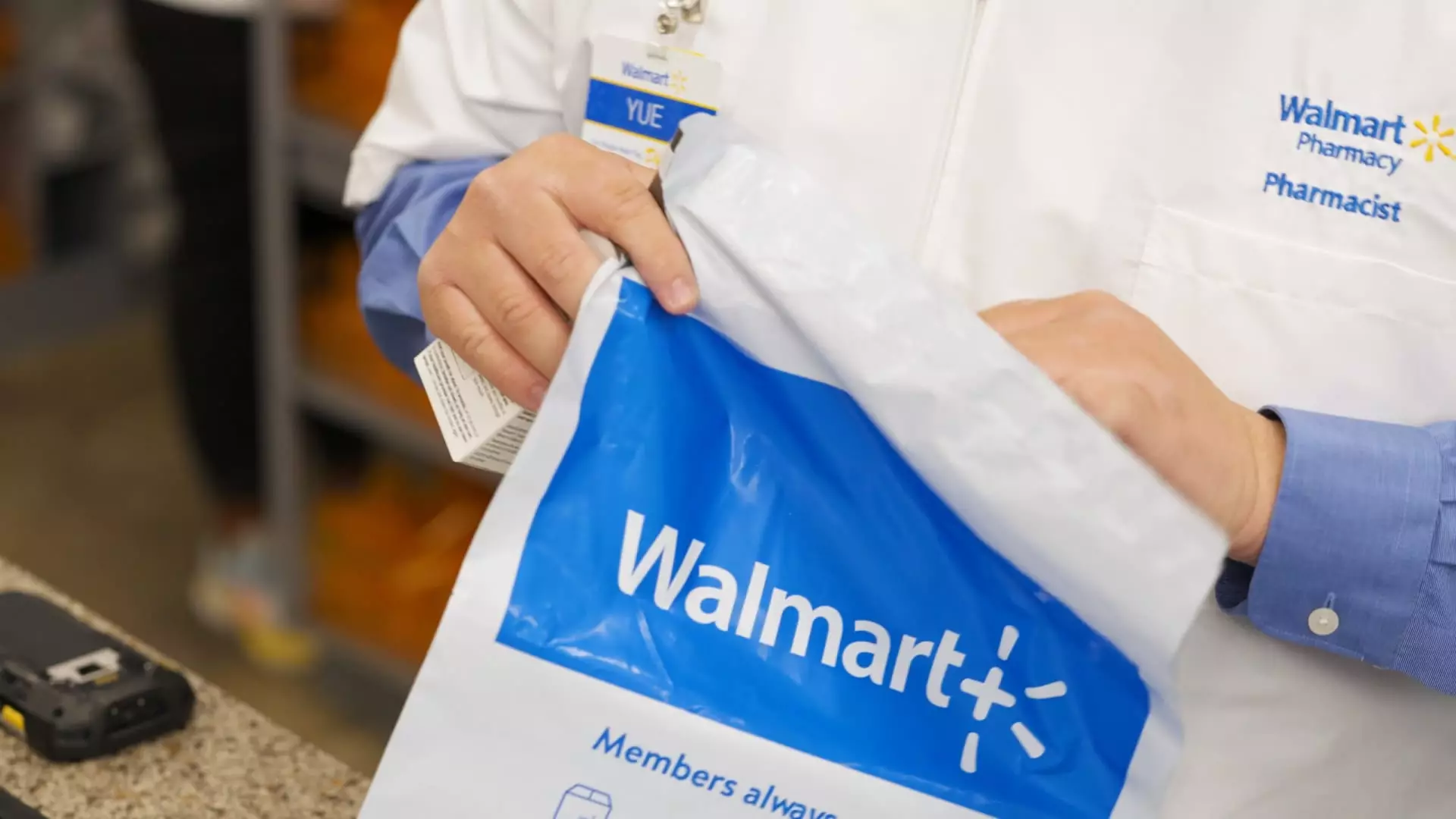In a rapidly evolving retail environment, companies are scrambling to innovate and capture consumer interest. With CVS and Walgreens facing significant challenges, including store closures and diminished stock value, Walmart is making noteworthy strides by launching a prescription delivery service. This move is not just about offering convenience; it’s a calculated strategy to recapture market share and redefine consumer expectations in the pharmaceutical landscape. By focusing on an integrated delivery model, Walmart is posing a formidable challenge to established drugstore chains, potentially reshaping consumer behaviors in the process.
Walmart has boldly announced that its prescription deliveries are currently operational in six states—Arkansas, Missouri, New York, Nevada, South Carolina, and Wisconsin—with aspirations to extend the service to 49 states by January’s end. However, a notable exception is North Dakota, where state regulations prevent such deliveries. This strategy leverages Walmart’s existing logistics capabilities and scale to effectively cater to consumer demand, showcasing its adaptability and readiness to capitalize on shifting market trends.
The service aligns with Walmart’s overarching goal of enhancing consumer convenience, particularly during the ongoing demand for integrated shopping experiences. By combining pharmacy items with other groceries or health-related products, customers can streamline their shopping processes, fostering loyalty in an increasingly competitive market.
Tom Ward, Walmart’s Chief E-commerce Officer, emphasized that the delivery service was implemented in direct response to consumer requests—indicating significant shopper interest in having prescriptions delivered alongside everyday items. This strategy of offering a bundled service is indicative of changing consumer preferences, where one-stop-shop models are becoming paramount. Furthermore, the service could potentially alleviate pressure on consumers who face barriers accessing prescription medications or prefer the convenience of home delivery.
Walmart’s decision to test this service in various states garnered positive feedback, affirming that the demand for pharmacy delivery in conjunction with household products is substantial. By providing a cost-effective delivery model, priced at $9.95 and free for Walmart+ members, the retailer is positioned favorably against traditional drugstores that have yet to fully embrace such integrated delivery solutions.
The landscape for drugstore chains appears increasingly bleak. CVS and Walgreens are struggling to adapt to market dynamics and consumer preferences. With CVS’s latest leadership change and plans to cut $2 billion in expenses—including the closure of nearly 900 stores—these giants are clearly feeling the pressure to transform their business models. In contrast, Walmart’s decision to offer prescription delivery signals a commitment to not only remain competitive but to also lead the charge in customer-centric retail innovation.
Statista’s data underscores the precarious situation for these drugstore chains, with CVS holding around 25% of the market share but seeing its stock decline over 26% in the current year. Meanwhile, Walgreens suffers even more, with stock dropping nearly 60%. Walmart’s market share, often labeled modest at 5%, exhibits untapped potential; the company’s entry into prescription delivery could shift the scales dramatically.
Despite Walmart’s successful foray into the delivery of prescriptions, the healthcare sector still presents significant challenges. The retailer aims to streamline healthcare costs and expand its reach through innovative service models, such as opening clinics to provide affordable medical appointments. This ambition highlights Walmart’s recognition of healthcare as a lucrative growth area—one that is critical to balancing its revenue streams, especially given current pressures from inflation and evolving consumer behaviors.
Moreover, the challenges faced by CVS and Walgreens are exacerbated by falling reimbursement rates for prescription drugs, coupled with a vicious cycle of inflation and shifts in consumer spending. This presents Walmart with a unique opportunity to establish itself as a cost-leader in the pharmaceutical space, but it must continue to navigate regulatory complexities and market dynamics carefully.
As Walmart steps into the fray with its new prescription delivery service, the implications for traditional drugstore chains cannot be understated. The threat posed by Walmart’s integrated delivery model encourages a reevaluation of CVS and Walgreens’ strategies as they strive to maintain relevance in a quickly changing marketplace. In this emerging paradigm, consumer preferences will increasingly dictate industry trends, and only adaptable businesses will thrive. Walmart’s ambitious plan to reshape pharmaceutical service delivery could very well prompt a significant industry shift—one that prioritizes convenience without compromising affordability, marking the dawn of a new era in retail pharmacy.

